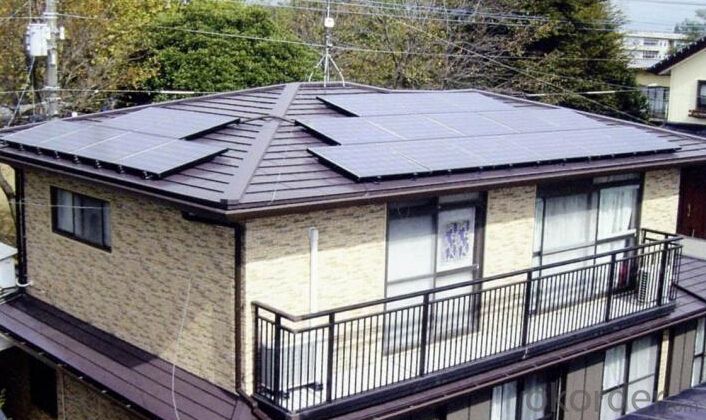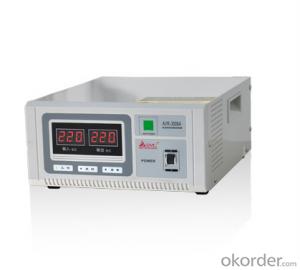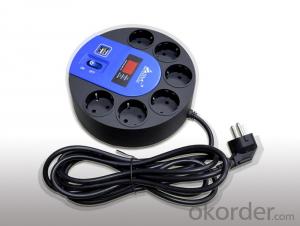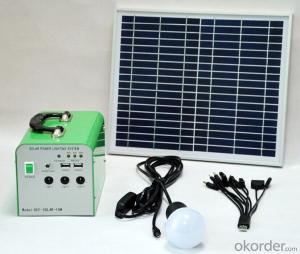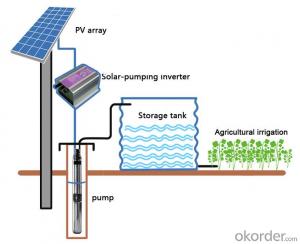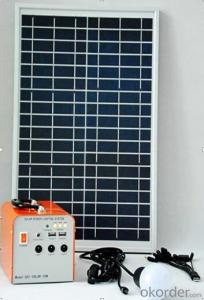Ay Yildiz Solar Energy Systems - 10kW Solar System
- Loading Port:
- China Main Port
- Payment Terms:
- TT or LC
- Min Order Qty:
- -
- Supply Capability:
- -
OKorder Service Pledge
Quality Product, Order Online Tracking, Timely Delivery
OKorder Financial Service
Credit Rating, Credit Services, Credit Purchasing
You Might Also Like

- Q: Can solar energy systems be used for powering sports stadiums?
- Yes, solar energy systems can definitely be used to power sports stadiums. The large surface area of stadiums provides ample space for installing solar panels, which can convert sunlight into electricity. By harnessing solar energy, stadiums can reduce their reliance on traditional power sources, lower energy costs, and contribute to a cleaner and more sustainable future.
- Q: How do I choose the right size of solar energy system for my home?
- To choose the right size of solar energy system for your home, you should consider factors such as your average electricity consumption, available roof space, and budget. Start by analyzing your electricity bills to determine your average monthly usage. Then, consider the amount of sunlight your location receives to estimate the potential energy production. Assess the available roof area and its orientation to determine the number of panels that can be installed. Finally, take your budget into account, considering the upfront costs and potential long-term savings. Consulting with a professional solar installer can also provide valuable insights and help you make an informed decision.
- Q: Can solar energy systems be used for air purification or water treatment?
- Yes, solar energy systems can be used for both air purification and water treatment. Solar-powered air purifiers use solar panels to generate electricity, which is then used to power air purification systems. Similarly, solar-powered water treatment systems utilize solar energy to power pumps, filtration systems, and disinfection processes, providing clean and safe water. These systems are sustainable and environmentally friendly alternatives to traditional energy sources.
- Q: How do solar energy systems contribute to reducing the risk of power outages during extreme weather events?
- Solar energy systems can help reduce the risk of power outages during extreme weather events by providing a decentralized and reliable source of electricity. Since solar panels generate electricity directly from sunlight, they are not dependent on the traditional power grid, which is vulnerable to damage during storms or other severe weather conditions. By harnessing solar energy, individuals and communities can maintain access to power even when the main grid fails, reducing the impact of power outages and increasing resilience during extreme weather events.
- Q: Can solar energy systems be used in areas with high levels of wildlife activity?
- Yes, solar energy systems can be used in areas with high levels of wildlife activity. However, proper measures should be taken to minimize any potential negative impacts on wildlife. This can include designing and installing systems that are bird-friendly, using wildlife-friendly fencing, and ensuring that the installation site does not disrupt important wildlife habitats or migration routes. Additionally, regular monitoring and maintenance can help identify and address any issues that may arise to ensure the coexistence of solar energy systems and wildlife.
- Q: What is the role of solar energy systems in disaster resilience?
- Solar energy systems play a crucial role in disaster resilience by providing a reliable and sustainable source of electricity during emergencies. These systems can power critical infrastructure such as hospitals, emergency shelters, and communication networks, ensuring that essential services remain operational even when the grid is down. Solar energy also reduces dependence on fossil fuels, making disaster-affected areas more self-sufficient and less vulnerable to fuel shortages. Additionally, solar panels are durable and require minimal maintenance, making them ideal for disaster-prone regions. Overall, solar energy systems enhance the resilience and preparedness of communities in the face of natural disasters.
- Q: How do solar energy systems impact the energy efficiency of buildings?
- Solar energy systems can greatly improve the energy efficiency of buildings. By harnessing the power of the sun, solar panels generate electricity, reducing the dependence on traditional energy sources. This, in turn, decreases the overall energy consumption of the building, leading to lower utility bills. Additionally, solar energy systems can help regulate indoor temperatures by reducing the need for air conditioning during hot periods and providing supplementary heating during colder months. Overall, solar energy systems play a significant role in enhancing the energy efficiency of buildings and reducing their carbon footprint.
- Q: Can solar energy systems be used for lighting outdoor spaces?
- Yes, solar energy systems can be used for lighting outdoor spaces. Solar lighting systems typically consist of solar panels, batteries, and LED lights. The solar panels collect sunlight and convert it into electricity, which is stored in the batteries. The LED lights are then powered by the stored electricity and provide illumination for outdoor spaces such as gardens, pathways, patios, or parks. Solar-powered outdoor lighting systems have several advantages. First, they are environmentally friendly as they do not produce any greenhouse gas emissions during operation. Additionally, they do not require any external power source, making them independent of the electrical grid. This makes them particularly suitable for remote or off-grid locations where connecting to the grid may be difficult or costly. Solar outdoor lighting systems are also cost-effective in the long run. While the initial installation cost may be higher compared to traditional lighting systems, there are no monthly electricity bills associated with solar lighting. Furthermore, solar lighting systems have low maintenance requirements, as the solar panels and batteries are designed to withstand various weather conditions. Another benefit of solar lighting systems is their flexibility and ease of installation. Since they do not require underground wiring or electrical connections, they can be easily installed in any outdoor space. This makes them ideal for temporary or seasonal lighting needs, as they can be easily moved or repositioned. In conclusion, solar energy systems can indeed be used for lighting outdoor spaces. They offer numerous benefits such as environmental sustainability, cost-effectiveness, low maintenance, and easy installation. Solar lighting systems are a practical and reliable solution for illuminating outdoor areas while minimizing energy consumption and reducing carbon footprint.
- Q: What is the difference between a monofacial and bifacial solar panel?
- A monofacial solar panel is a conventional type of solar panel that only uses one side of the panel to capture sunlight and convert it into electricity. Photovoltaic (PV) cells on the single side of the panel absorb sunlight and produce electrical current. Monofacial panels are the most commonly used type of solar panels. On the other hand, a bifacial solar panel is designed to capture sunlight from both sides of the panel. It has PV cells on both the front and back sides, allowing it to generate electricity from sunlight that is reflected or scattered onto the back side. This design has an advantage over monofacial panels as it can generate more energy by harnessing light that would otherwise be wasted. The main difference between monofacial and bifacial solar panels lies in their efficiency and energy output. Bifacial panels can produce more electricity per unit area than monofacial panels because they can capture light from both sides. This makes bifacial panels a suitable choice for situations where space is limited and maximizing energy production is crucial. Additionally, bifacial panels can benefit from certain installation configurations that allow light to bounce off the ground or other nearby surfaces onto the backside of the panel, further increasing their energy output. This makes them particularly effective in environments with high levels of ground reflectance, such as snow-covered areas or locations with white rooftops. However, it is important to note that the increased efficiency and energy output of bifacial panels come at a higher cost compared to monofacial panels. Bifacial panels require more complex design and manufacturing processes, which contribute to their higher price. Additionally, the installation of bifacial panels may require specialized mounting systems to ensure proper exposure to both sides of the panel. To summarize, the main difference between monofacial and bifacial solar panels is their ability to capture sunlight. Monofacial panels use only one side of the panel to generate electricity, while bifacial panels utilize both sides, resulting in higher efficiency and energy output. However, the higher cost and specific installation requirements make bifacial panels a more specialized choice compared to the widely used monofacial panels.
- Q: Can solar energy systems be installed on flat roofs?
- Yes, solar energy systems can be installed on flat roofs. In fact, flat roofs are often ideal for solar panel installation as they offer a larger surface area for placement and are easily accessible for maintenance. Additionally, there are various mounting options available specifically designed for flat roofs to ensure the optimal positioning and efficiency of the solar panels.
Send your message to us
Ay Yildiz Solar Energy Systems - 10kW Solar System
- Loading Port:
- China Main Port
- Payment Terms:
- TT or LC
- Min Order Qty:
- -
- Supply Capability:
- -
OKorder Service Pledge
Quality Product, Order Online Tracking, Timely Delivery
OKorder Financial Service
Credit Rating, Credit Services, Credit Purchasing
Similar products
Hot products
Hot Searches
Related keywords

